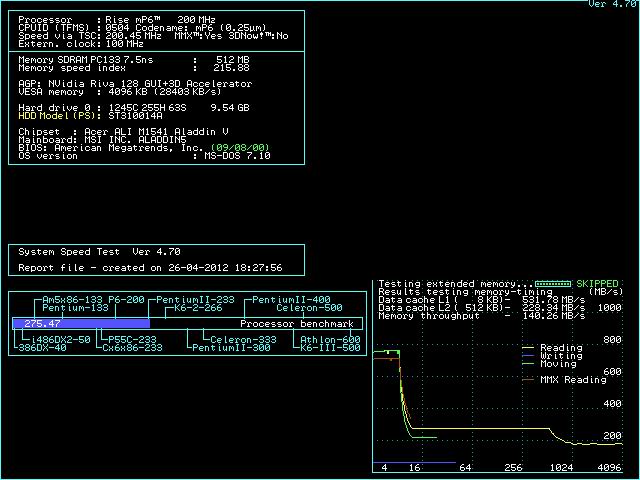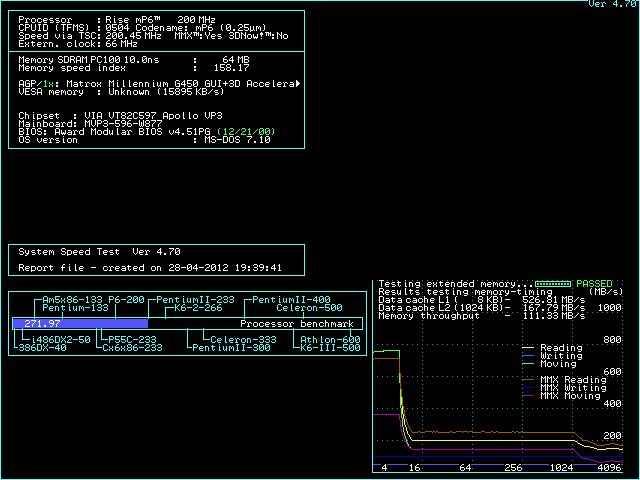Reply 40 of 107, by kool kitty89
wrote:wrote:couldn't you at least do some quick preliminary tests for basic stability (ie will with system at least boot and maybe run some basic tests/benchmarks -like speedsys, etc)
You could, but it wouldn't prove long-term stability. I have found that CPUs can pass all the benchmarks, pass Windows98 installation, and still fail in the long-run. Have you been looking for a SS7 and a Cyrix MII? Perhaps you could run this test. I'm busy with the 686 benchmark comparison and don't want to go too far astray.
I currently only have a MII 366 (2.5x100) 2.9V I got on ebay about a month ago. That should certainly pass 2x100 MHz fine (and give realistic benchmarks for a hypothetical 2x100 MII), but it wouldn't address the overclockability of 66/75/83 MHz bus parts. (though I could test to see if its stable at 3.5x75 or 4x66 -I doubt it will do much more than that given the general limits of the 2.9V parts)
The only socket 7 board I have now is a FIC503A, though (assuming the performance is similar to the 503+) that should be a good one to benchmark with.
I've been checking weirdstuff for more boards and CPUs, but I haven't seen any socket 7 boards since that 503+ a couple months back, and they don't have any socket 7 CPUs stocked/sorted in the front part of the warehouse either. (they probably have a lot more old boards/systems/CPUs in the back warehouse section, but that's employees only and they've been too busy to go back and look, at least the days I've tried) -I'm still keeping an eye out for an FIC 502 though. (on that note, it might be worth contacting the Red Hill to see if they have records of their FIC 502 with 166 MHz 6x86MX-200 tests mentioned on their museum page -they mentioned integer performance on par with a Pentium MMX 233)
They up until a little over a month ago (early february), the wierdstuff website had listings of CPUs from 808x up through modern Athlons/Xeons/Pentiums (as well as some 68k models and a few RISC parts), but they seem to have removed everything prior to socket A (I don't even see 370 on there). So either they sold all their current stock of older parts, or they stopped selling the older parts online at all. (though it would seem pretty odd to abruptly go from offering almost every category down to early 80s and then cutting off everything pre 2001-ish)
The last time the site had socket 5/7 parts, it was still limited to K6-II/+ and Pentiums (a couple dozen K6 parts iirc and a handful of Pentium/PMMX parts).
But, again, it's still quite possible that there's a lot more unlisted stuff in the back warehouse (and most of the customer-access section has stuff that's not on the site as well -especially a huge amount of "as-is" parts). I saw a guy donate/sell an old PC-AT class system (huge IBM-style desktop box) with a K6 sticker on it several weeks ago, and I haven't seen it in the front section either. (probably back in the warehouse)

